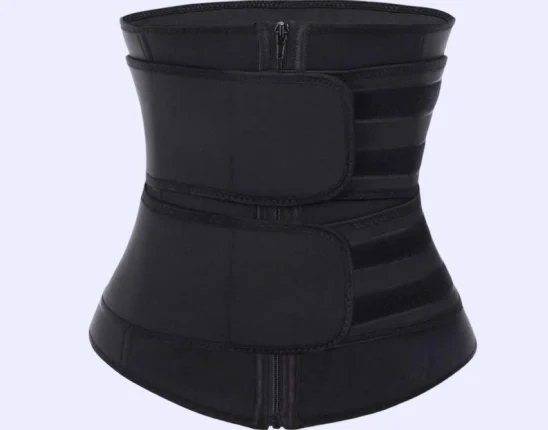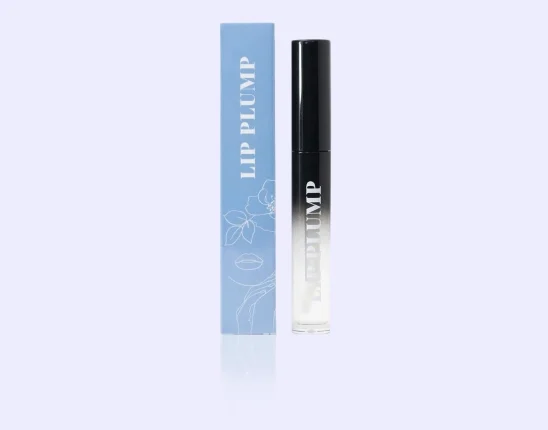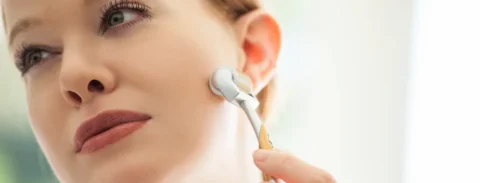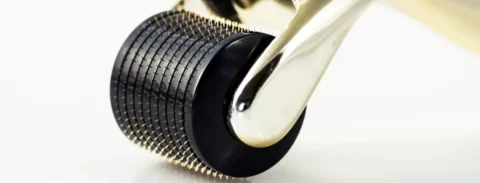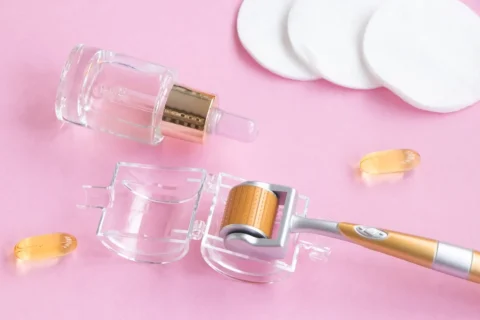Psoriasis is a condition that can affect almost all parts of the body, especially around the arms and legs. This can be an issue for people who want to go through skin rejuvenation and skin tightening treatments, since using tools like derma rollers or microneedling pens on an area affected by psoriasis can be dangerous and can potentially aggravate the condition. But while difficult, it’s not impossible.
So can a person use a derma roller on areas like the face if they have psoriasis on their legs? As long as the derma roller doesn’t make contact with the infected area, they should generally be fine with using a derma roller on their bodies. However, they should take certain precautions to ensure that their derma roller treatments won’t spread or worsen the psoriasis that they already have.
Using A Derma Roller On The Face With Psoriasis On The Legs
The most important thing to remember when using a derma roller when someone has psoriasis is to avoid using it on or near areas with an active breakout. Since the legs are fairly far away from the face, using a derma roller should be fine as long as precautions are followed to make sure the tool isn’t infected.
Done properly, the patient can expect to receive all the benefits of consistent derma roller treatment without the risk of spreading psoriasis to their face from their legs. However, they should always consult a medical professional or a cosmetic expert if there are better ways for them to get skin tightening or skin rejuvenation treatments while treating psoriasis.
Why Derma Rollers Shouldn’t Be Used On Psoriasis Breakouts
Psoriasis is a long-term skin condition that commonly manifests as scaly skin around the body. While it’s broadly classified as belonging to the categories of skin diseases and skin injuries, there are different types and symptoms of psoriasis that can make it difficult to manage:
- Plaque psoriasis: lesions on the elbows, knees, and scalp
- Inverse psoriasis: skin inflammation around the buttocks, groin, and breasts
- Guttate psoriasis: scaling lesions on the trunk, arms, legs
- Psoriatic arthritis: stiffness and nail lesions
- Nail psoriasis: pitting, abnormal nail growth, discoloration
Dermal rollers cannot work on skin that has psoriasis because the micro-injuries caused by the needles can trigger the symptoms of psoriasis, cause active infections, and can even spread around bacteria. Aside from increased skin sensitivity, it also contaminates the derma roller itself, which can be a significant issue if it isn’t maintained or cleaned properly.
How To Use Derma Rollers Effectively With Psoriasis

If a patient is considering using a derma roller on their face when they have psoriasis on their legs, they need to be extremely careful to make sure that the infection risk doesn’t carry over from their legs to their face. A good way to make sure this never happens is to never use the derma roller on their legs and to avoid contact between the two areas as much as possible.
Here are other tips that they can follow:
1. Ensure that their derma roller is sanitized
Psoriasis isn’t the only infection that these patients will have to worry about. The environment for derma rolling isn’t always sterile, which can increase the risk of foreign contaminants like viruses and bacteria being present on the skin and the derma roller before use.
This can be a problem because derma rolling opens channels in the skin which viruses and bacteria can use to enter the body and infect the treated area. Even if the micro-injuries from the procedure aren’t comparable to the entry point made by an actual open wound, it’s still a potential pathway for infection.
Sanitizing the derma roller before treatment goes a long way to preventing this from happening, as well as being a general hygienic practice to follow when doing microneedling treatments. Most patients who do their derma rolling at home need to be extremely careful to keep their derma rollers well-maintained and disinfected before and after use, especially if they’re older people.
2. Not skipping their psoriasis treatments
Psoriasis is a chronic condition that doesn’t always present itself with active symptoms. This can cause a false sense of security for psoriasis patients, and they may be tempted to not be as cautious as they need to be when performing or getting skin care treatments.
This is dangerous because the triggers and causes of psoriasis are still not that understood, which means that getting a derma roller treatment can potentially cause psoriasis to develop on the face, even if it started somewhere else on the body. This has a higher chance of occurring if the patient gets their derma roller sessions done in a potentially unsterile environment.
Most medical professionals will advise using the derma roller on a small patch of skin on the face (typically the cheek) and monitoring it for potential signs of psoriasis for a few days. If possible, patients should also consult with their dermatologist or doctor about any potential need to adjust their psoriasis treatment while going through their microneedling sessions.
3. Applying lotions, serums, and other skincare products
One of the significant effects of Microneedling and derma roller use is increasing the absorption rate of the skin for topical treatments like lotions and serums. Since the small channels formed by the micro-injuries bypass the skin barrier, topical applications don’t need to take too long to be absorbed by the body.
Some products work better than others – for example, hyaluronic acid has extensive effects with helping the skin stay hydrated after a derma rolling session, alongside adding more volume and helping with wound healing. In contrast, exfoliants like retinol, salicylic acid, glycolic acid, or serums enhanced with Vitamin C can cause extensive irritation, which can lead to adverse effects.
However, this increased absorption cannot help with the treatment of psoriasis, since using a dermal roller on an infected area will only make psoriasis worse. Other methods like light therapy or topical treatments can still be used, but never in combination with derma rollers.
In summary, a patient looking to use a derma roller on their face while having psoriasis on their legs shouldn’t be a cause for worry or alarm, as long as proper precautions are followed with their use. By consulting a dermatologist (or alternatively having their microneedling treatments done in-clinic) a patient should be able to benefit from their derma roller treatments without too much trouble.
What Other Skin Rejuvenation Treatments Are Available?
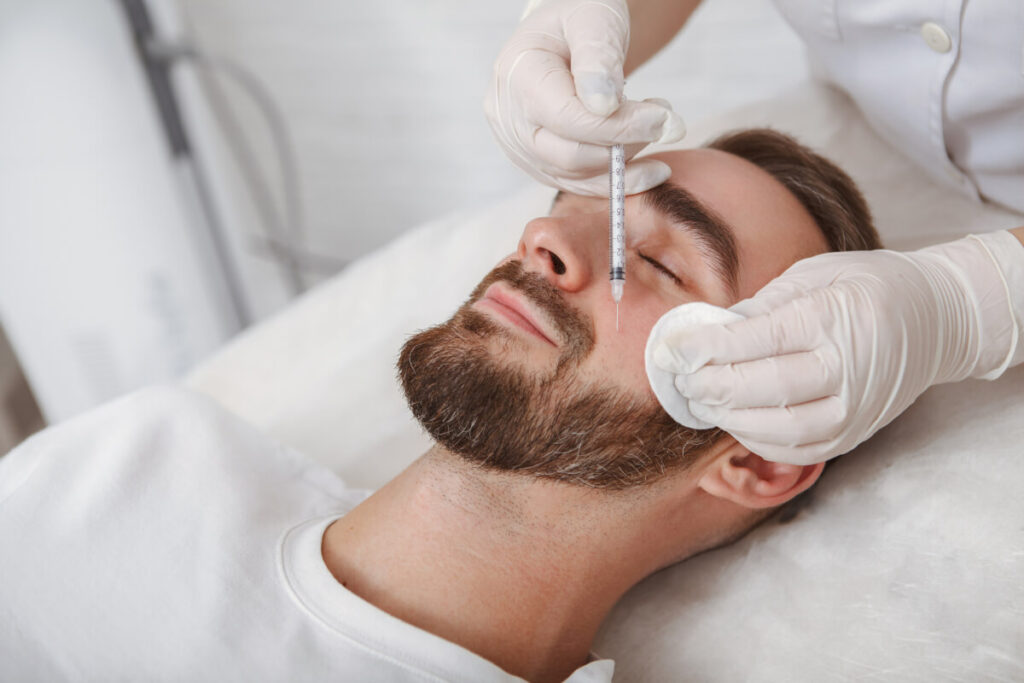
Derma rolling and microneedling aren’t the only ways that a psoriasis patient can enjoy skin rejuvenation. For many patients, alternatives to derma rolling are a necessity if they have a skin condition that makes microneedling painful or less effective on their skin.
Some of these alternatives include:
1. Dermal filler
Cosmetic injectables like dermal filler have rapidly become the cosmetic treatment of choice for many patients looking to make improvements on their skin. As a non-invasive treatment, dermal filler can help add volume, lift sagging skin, and fill in fine lines and wrinkles on the skin and body with relatively minor effort.
Apart from regular applications to ensure that the skin continues to enjoy the effects of the dermal filler, these treatments are extremely flexible in their active ingredients and the exact skin conditions that they can help with. They can be used with little to no worries about potential side effects, and can even be combined with conventional skin rejuvenation treatments for even better results.
Dermal filler brands include Juvederm, Restylane, Belotero, Bellafill, Sculptra, and Radiesse. In some cases, cosmetic providers can use one or a combination of different dermal fillers depending on the severity of the wrinkles in an area.
2. Botulinum toxin treatments
Another type of cosmetic injectable that most patients typically use is botulinum toxin injections like Botox, Dysport, or Xeomin. All of these brands use botulinum toxin as their primary ingredient to help manage forehead lines, crow’s feet, or smile lines around the face. They also have medical applications like helping reduce headaches.
Botulinum toxin injections work by stopping the neurotransmitters in the muscles from receiving signals, which paralyzes and relaxes them. By preventing them from moving, they reduce the likelihood that wrinkles will form. Botulinum toxin injections also stack over time, so the earlier that a person uses them, the less Botox they’ll need in the future.
However, care needs to be taken with applying botulinum toxin injections to areas that are already under heavy medication, like the treatments used for psoriasis. If a patient wants to get Botox or Dysport treatments while taking psoriasis medications, they may have to clear themselves with their doctor to ensure there will be no side effects.
3. Laser treatments and chemical peels
Laser treatments are particularly effective if the person needs help with skin conditions like scarring or uneven skin tone. Since it’s a non-invasive treatment, it’s a popular option for many patients who may not have the time or money to go through surgery. By using lasers of different intensities and wavelengths, providers can achieve a wide variety of skin improvements like scar reduction, skin tone correction, and treating fine lines and wrinkles.
Chemical peels are also a viable option, though it’s only limited by how deep the peels can reach into the layers of skin. Most patients will opt for light peels since they’re the easiest to heal from, though older patients may try medium or deep peels for better results. However, anything more than light peels should only be done by professionals to avoid adverse effects.
These treatments can all be used on a person who has psoriasis, but it’s important to note that they should be cleared by their doctor before undergoing the procedure. Cosmetic providers may refuse to provide these services to psoriasis patients without prior medical approval.
Get High-Quality Medical Tools, Skincare Products, And Other Supplies From FACE Medical Supply
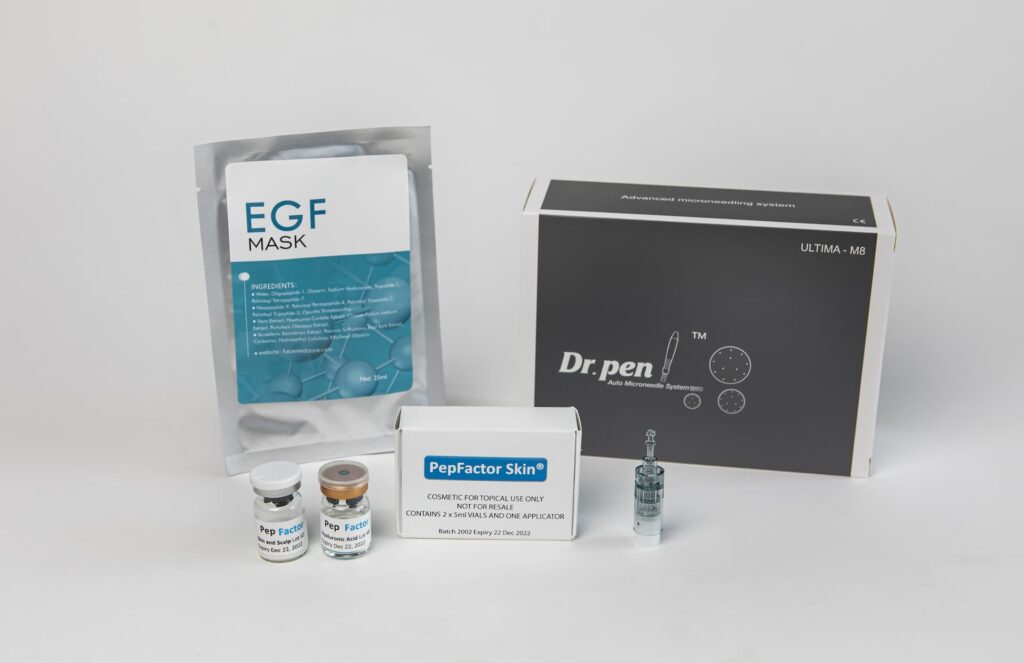
People with psoriasis can still use derma rollers and other microneedling tools, but they can only use them in areas that don’t have psoriasis. If a patient wants to use a derma roller on their face even if they have psoriasis on their legs, they’re generally free to do so – though it’s a good idea to consult a dermatologist to ensure that their skin won’t suffer any adverse effects from doing so. Adding products like lotions, creams, and serums to the surface layer of skin can also help, especially if the patient has dry skin or sensitive skin.
FACE Med Store has provided cosmetic and medical practices across the country with reliable access to high-quality and affordable medical tools and supplies. By expanding our services to individual clients, we aim to make effective treatments more accessible to the public by providing quality tools and products at competitive prices. Whether you’re a healthcare professional, healthcare provider, or someone looking for extra medical supplies, we’re always ready to provide you with what you need without having to hike up the price.
For more information about us, our stocks, and our services, contact us today.

